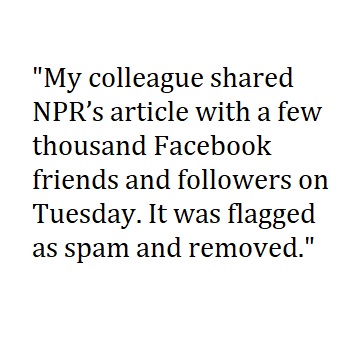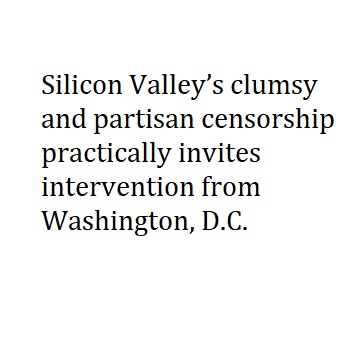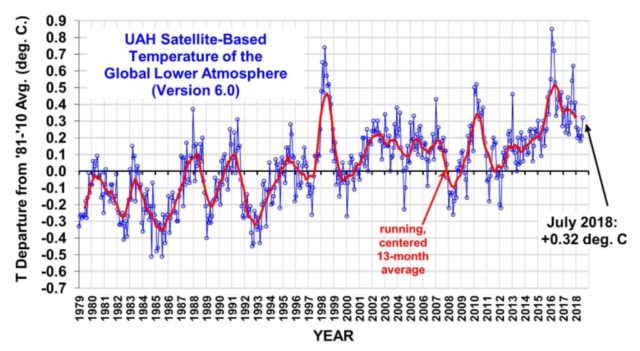Planned Parenthood: Pro-Sexual Assault Until It Hurts Their Narrative
On Friday, Judge Brett Kavanaugh denied an unproven accusation that he and a friend sexually assaulted a woman in high school. As the Senate decides how to react to the accuser’s claims, Planned Parenthood is jumping on the bandwagon to claim that Kavanaugh’s Supreme Court nomination process should be halted.


The replies to these Tweets lay out the case that Planned Parenthood is simply being a left-wing attack dog. More importantly, however, is their absolute hypocrisy when it comes to treatment of women who are sexually assaulted.
2ndVote readers are familiar with Live Action’s excellent work uncovering Planned Parenthood’s widespread protection of sex abusers. Are you also aware of the time a Mobile, Alabama Planned Parenthood center gave two abortions to a 14-year old girl in four months, but concluded that she wasn’t being sexually assaulted? The center also did not report the girl’s condition to the state, in violation of health care reporting laws.
The girl had two children prior to those abortions, as well. LifeSiteNews has more:
That official said that a LifeSiteNews summary of the situation was “true,” but it “would be much better” if LifeSiteNews framed its coverage favorably. It was subsequently clarified with this official that “essentially, your department was satisfied [Planned Parenthood] had acted in good faith, and not intentionally hid this information” from child protective services.”
This official also told LifeSiteNews that Planned Parenthood had previously investigated the 14-year old’s circumstances, and determined she was not being abused. However, the spokesperson LifeSiteNews spoke with on Monday said that there are no state requirements for what questions Planned Parenthood asked of the 14-year old to determine her four pregnancies were not due to abuse.
Got that? The state health department believed Planned Parenthood “accidentally” broke state law, so it gave them a slap on the wrist. No wonder Planned Parenthood’s national spokespersons believe they can continue to flout sex abuse, baby sales, and other laws with impunity. And no wonder Planned Parenthood believes it can claim to #BelieveWomen about sexual assault despite its own poor record on that front.
The only thing Planned Parenthood will listen to is money. 2ndVote shoppers should tell corporate backers of America’s largest abortion company to stop funding sex abuse cover-ups and slaughter of the unborn.
The following companies and nonprofits have directly funded Planned Parenthood
Adobe
Aetna
Allstate
American Express
Amgen
AutoZone
Avon
Bank of America
Bath & Body Works
Ben & Jerry’s
Blue Cross Blue Shield
Boeing
BP
Charles Schwab
Clorox
Craigslist
Converse
Deutsche Bank
Diageo
Dockers
Energizer
Expedia
ExxonMobil
Fannie Mae
Freddie Mac
Frito Lay
General Electric
Groupon
Intuit
Jiffy Lube
JPMorgan Chase
Johnson & Johnson
Kaiser Permanente
Kraft Heinz
Levi Strauss
Liberty Mutual
March of Dimes
Microsoft
Mondelez International
Monsanto
Morgan Stanley
Nike
Oracle
Patagonia
PayPal
PepsiCo
Pfizer
Progressive Insurance
Prudential
Qualcomm
Starbucks
Shell
Susan G. Komen
Unilever
United Airlines
United Way
US Bank
Verizon
Wells Fargo
WD-40 Company
The following companies have supported 3rd party groups that fund Planned Parenthood
3M
7 For All Mankind
Abbott Laboratories
Accenture
Adobe
ADP
Advanced Micro Device
Aetna
Alamo
Albertsons
Alcoa
Allstate
American Airlines
American Express
American Greetings
American Petroleum Institute
Ameriprise Financial
AmerisourceBergen
Amgen
Anheuser-Busch
Ann Taylor
AOL
Apostrophe
AT&T
Avon
AXA
Banana Republic
Bank of America
Belk
Ben & Jerry’s
Best Buy
Black & Decker
Boeing
BP
Bridgestone
Bristol-Myers Squibb
Calvin Klein
Campbell’s Soup
Cargill
Carmax
Caribou Coffee
Central Pacific Financial
CenturyLink
Cigna
Cisco
Citibank
Choice Hotels
Clorox
COACH
Comcast
Comerica Bank
Commerce Bank
Conagra
ConocoPhillips
Costco
Converse
Corning Inc.
CoverGirl
CVS
Dana Farber Cancer Institute
Del Monte Foods
Dell
Delta Express
Deutsche Bank
Diageo
DiGiorno
DIRECTV
Dockers
Dollar General
Dollar Shave Club
Dow Chemical
DowDuPont
eBay
Energizer
Enterprise Holdings
Ernst & Young
eToys.com
Expedia
Express Scripts Inc.
Fannie Mae
FedEx
Fifth Third Bank
Ford
Freddie Mac
Friendly’s
Frito-Lay
Fry’s Food Stores
Gap
GEICO
General Electric
General Mills
General Motors
Goldman Sachs
Google
Groupon
H-E-B
H&R Block
Hallmark Cards
Harris Teeter
Hasbro
HBO
HCA Holdings
Health Net
Hellmann’s Mayonnaise
Hershey Company
Hewlett-Packard
Hillshire Brands Company
Home Depot
Honda
Hunt’s
Hurleys
IBM
Intel
Intuit
Jack in the Box
JanSport
Jell-O
Jenn-Air
Jet.com
Jiffy Lube
John-Deere
John Hancock Financial
Johnson & Johnson
JPMorgan Chase
Junior Achievement
Kellogg’s
Kenmore
Kentucky Fried Chicken
Kimberly-Cark
Kipling
KitchenAid
Kmart
Kohl’s
KPMG
Kraft-Heinz
Kroger
L.L. Bean
Lands’ End
Lee
Levi Strauss
Liberty Mutual
Lincoln Financial Group
LOFT
MAPCO
Mars Inc.
Marshalls
Mary Kay
MassMutual
MasterCard
Maytag
Mcdonalds
Merck & Co.
MGM Resorts International
Mircrosoft
Mondelez International
Monsanto
Morgan Stanley
Motorola
National Car Rental
National Basketball Association
National Football League
Nautica
NBC Universal
NCAA
Nestle
New Balance
New York Life
Newell Brands
Old Navy
Oracle
Pacific Life
PayPal
PepsiCo
PetSmart
Pfizer
PINK
Pizza Hut
PNC Bank
Prudential Financial and Insurance
Procter & Gamble
Progressive Insurance
Publix
Qdoba Mexican Grill
Quaker Oats
Qualcomm
Quality Inn
QuickBooks
Ralph Lauren
Ralphs
REI
Rite Aid
Safeway
Sam’s Club
Schnucks
Sears
Seattle’s Best Coffee
Shell Oil
Shelter Insurance
The Sherwin Williams Company
Sprint
Starbucks
State Farm
Subaru
Subway
SunTrust
Susan G. Komen
T-Mobile
T.J. Maxx
Taco Bell
Tazo Tea
Teavana
Texas Instruments
The North Face
The Travelers Companies
Tiffany & Co
Timberland
Time Warner
Toro
Toys R Us
Tractor Supply Company
Turbo Tax
Unilever
UnitedHealth Group
US Bank
USAA
Vanity Fair
Vans
Verizon
Victoria’s Secret
Walmart
Walgreens
Wawa
Wells Fargo
Western Union
Whataburger
Whirlpool Corporation
White Castle
Wrangler
Yelp
Youtube
Xerox
Zales
Help us continue creating content like this and educating conservative shoppers by becoming a 2ndVote Member today!
EDITORS NOTE: The featured image is from Shutterstock.












 Over a period of several months, they contacted every school. What NPR found was startling.
Over a period of several months, they contacted every school. What NPR found was startling.
 Social media tech giants have
Social media tech giants have 


















